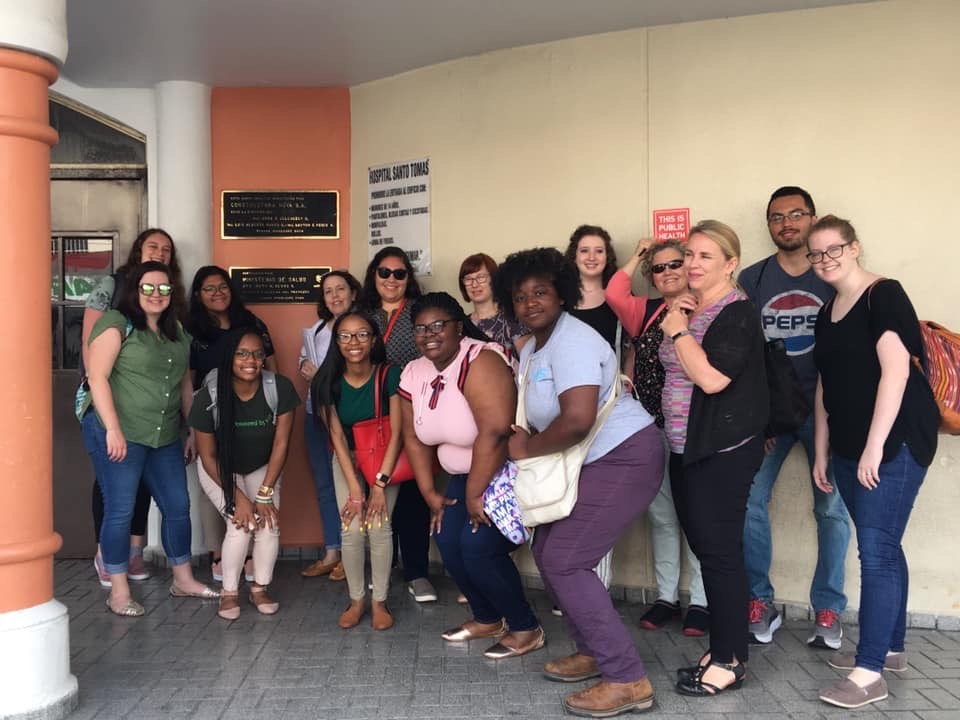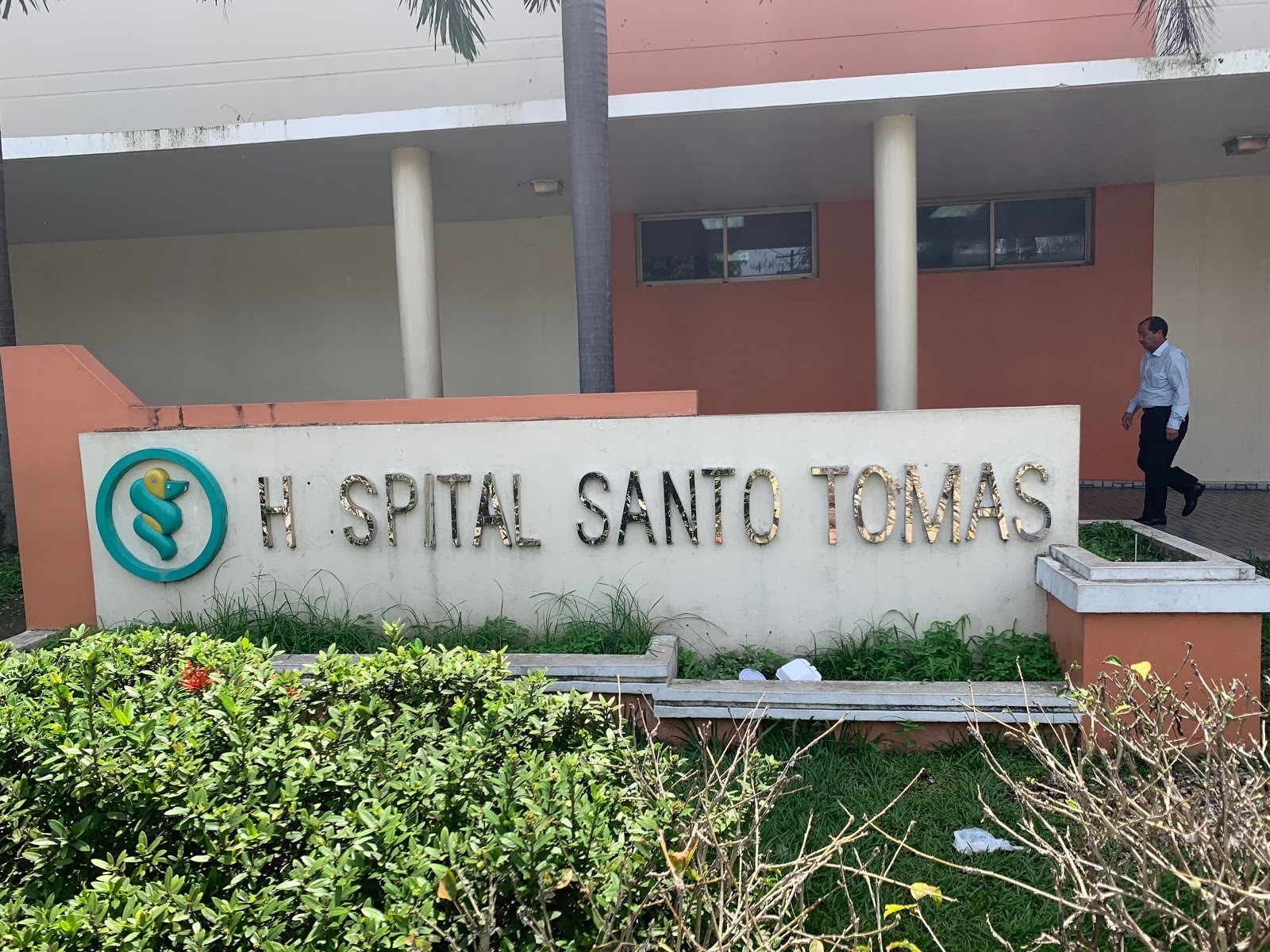
Santo Tomas Hospital (HST)
This hospital is the largest public hospital in Panama. This hospital is what the Panamanian Ministry of Health refers to as a level-three hospital and provides the highest level of care through the Ministry of Health. Santo Tomas was officially founded on September 22, 1702. It was mentioned for the first time in writing on April 11, 1703, when Juan de Argüeyes, the Bishop of Panama City, wrote a letter to King Phillip V of Spain begging him to change the name to reflect a hospital and not just a hospice facility for treating women. Later in 1819, construction of a new facility began. After the new hospital was built, they began treating men at the facility. Starting in September 1924, new buildings were built where the hospital currently stands on Balboa Avenue in Panama City.
Several former wards of the hospital later became independent facilities. For example, the pediatric ward became Hospital del Niño (Children’s Hospital) and the oncology ward became the Instituto Oncologico Nacional (National Oncologic Institute, located at the former Gorgas Hospital). Currently the hospital serves patients 15 years and older, and includes a maternity ward, an emergency department, outpatient clinics, internal medicine, general surgery, an infectious disease ward, and more. Some of the medical specialties available are cardiology, endocrinology, general surgery, internal medicine, neurology, obstetrics and gynecology, orthopedic surgery, psychiatry, and radiology. Santo Tomas is the only location for these specialties for people without private or social security insurance. Keep in mind that this includes 40-60% of Panama’s population that depend on the Ministry of Health’s clinics and hospitals as their only access to healthcare.
Today, Santo Tomas has 632 beds, and is the largest teaching hospital in Panama. It serves as an integral part of Panama’s public healthcare system and is the only access to healthcare for the poorest residents of Panama.

HIV in Panama
While at Santo Tomas Hospital, we received a tour of the adult infectious disease ward and then the HIV/AIDS clinic from Dr. Ana Belen Arauz, an infectious disease doctor. Hearing her speak about treating infectious diseases, specifically HIV/AIDS, amongst adults at the largest hospital in the country, was encouraging and discouraging at the same time. It was so profound to hear from a physician who was educated in the United States but has chosen to return to Panama to work in the field of HIV/AIDS. Yet her work seems daunting with 60 AIDS patients currently admitted to the hospital (10-14 die monthly), and hearing her speak so candidly about infectious diseases and their control made us feel like we were getting to see behind the curtain. So much of what we have heard about clinical medicine in Panama has focused solely on prevention, however, we learned that no one is being tested for gonorrhea or chlamydia, and treatment of these and other sexually transmitted diseases is based solely on symptoms.
Dr. Arauz spoke to us at length about HIV/AIDS rates and the associated opportunistic co-infections they see in Panama, including TB, histoplasmosis, toxoplasmosis, and meningitis. Often times people are not diagnosed with HIV/AIDS until the signs and symptoms of these opportunistic infections drive them to seek medical care. She shared that currently 4,000 HIV-positive patients are being seen at the clinic at Santa Tomas, and estimates that another 5,000 are being seen at the Social Security Hospital. Dr. Arauz estimates that there are currently 30,000+ HIV-positive individuals in Panama, this is an increase from previously reported estimates of approximately 16,000 in 2017 and 18,000 in 2018.
Dr. Arauz also discussed Panama’s efforts to reach the 90-90-90 targets, 90% of HIV cases diagnosed, 90% of those diagnosed receiving treatment, and 90% of those on treatment achieving viral suppression. That is the goal, but Dr. Arauz explained that the reality in Panama is currently closer to 70-60-60. She believes that there are a number of reasons that are preventing Panama from reaching the 90-90-90 targets, including: 1) Stigma associated with high risk lifestyles which leads to low testing rates in that population, 2) Diagnosis is difficult because blood tests must be administered in a clinic by a lab technician and many people find it difficult to travel to a clinic , 3) Many HIV diagnoses come late, after signs and symptoms of opportunistic infections are occurring, 4) Funding for HIV testing, treatment, and care services is low, and is expected to decrease when PEPFAR funds are reduced, 5) It takes a month or longer to get an individual who tests HIV positive linked into care, 6) Viral loads are only checked every six months and the currently available ART has a 12-14% resistance rate, 7) There is only one social worker for all of Santo Tomas, and 8) Sex education is not allowed in schools and there are high rates of HIV diagnoses among 15-18 year olds.
In wrapping up, Dr. McCormick asked Dr. Arauz, “How do you keep a positive attitude?” This was a great question considering the challenges that she faces on daily basis. Dr. Arauz answered, “After being here eight years, I have noticed change, although it is not fast.” Santo Tomas Hospital is fortunate to have someone like her on their team.

The Biodiversity of Panama

This afternoon we visited the Biomuseo, a museum that celebrates the biodiversity of Panama. The museum was designed by world-renowned architect Frank Gehry and was designed to tell the story of how the isthmus of Panama rose from the sea, uniting two continents, separating a vast ocean in two, and changing the planet’s biodiversity forever. The museum houses ten different exhibits which explore different aspects of biodiversity in Panama and how it affects life in Latin America.
One of the exhibits highlighted how human beings are an integral part of nature, and how human activity has impacted nature in Panama over the last 15,000 years- the estimated date when the first settlers arrived to the isthmus. It was easy to see how environment and health are so interrelated as we moved through these exhibits.

